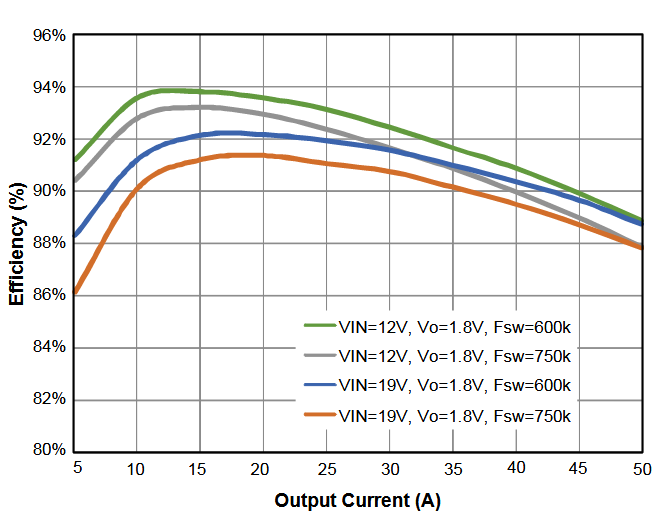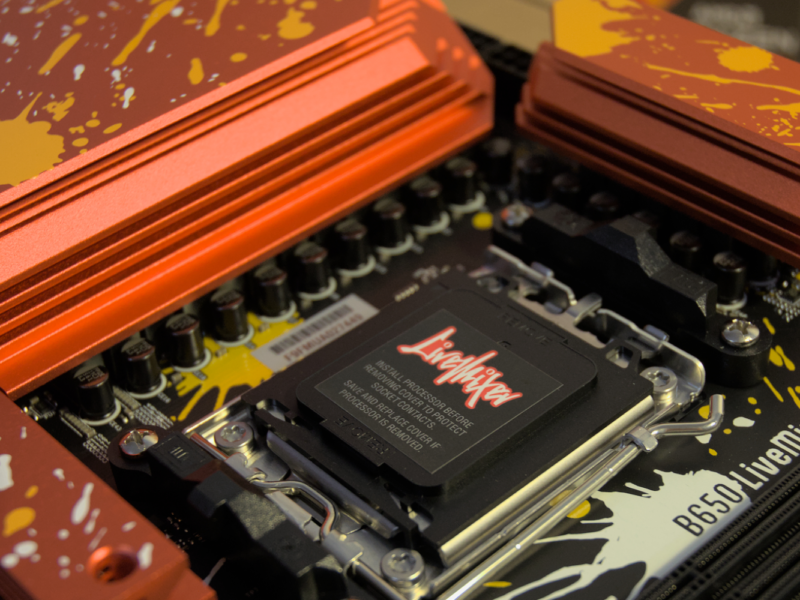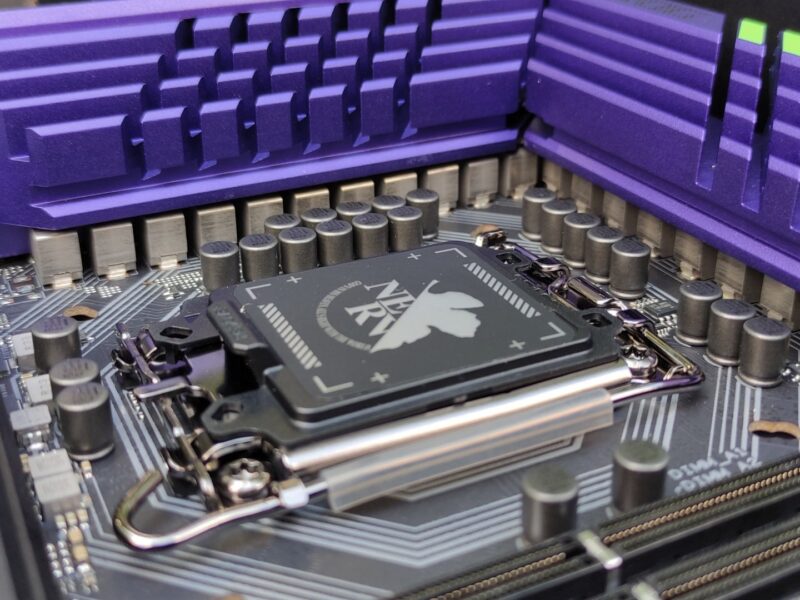There. I’ve said it. There is no need for such overpacked, overkill VRMs everywhere!
Why is so big?
The constatation
For the last few generations of CPU now, the motherboards coming along have been advertising bigger and bigger VRMs, with more and more power stages, and more powerful power stages.
With the release of zen 4 (Ryzen 7000 for those lost in naming schemes) and X670 motherboards, we are seeing anywhere from 16 to 24 power stages just for Vcore and anywhere from 70A to 110A for power stages.
Those numbers are really, really high. And yet, CPU current draw doesn’t seem to increase at the same pace. So, is there a reason to have so much power?
The basics of a VRM system
Your power supply delivers 12V to the motherboard. However, your CPU only needs 1V to 1.5V, depending on the model and the context. You need to convert that 12V from the power supply in order to not kill your CPU. That is exactly what the VRMs are for. We’re not gonna go into details over how they work, but the principle is simple: you have 12V on the input, and you have 1V-1.5V on the output. There is however a slight loss due to how physics work, so a small portion of the power entering the VRMs will be lost as heat. This also means a VRM produces heat and needs cooling.
In DC circuits, the power in watts (W) is measured by multiplying the current in amps (A) by the voltage (V). This gives us an equation of W = A x V.
The heat loss happens in an electrical component I’ve named “power stage” here, which is a fancy electronic component regrouping 2 MOSFETs and a driver IC in a single package. Both act as a fancy transistor that switches on or off in order to decide if current can flow through it or not. This switching is what produces heat and is where energy is lost. That is why MOSFETS and power stages have an efficiency curve like this one:

This is a graph for a MOSFET rated at 50A maximum current handling. The peak efficiency is around 15A, so 30% of the maximum current the MOSFET can handle. This is one of the big reasons why VRMs have naturally much higher current handling capacity than what a CPU can pull. You don’t want a MOSFET to run at 100% of their rated current because the efficiency would be terrible, and you would face horrible heat output and energy loss.
But it’s not as simple as saying “let’s make a VRM where the peak CPU current draw is the peak efficiency of the power stages”. CPU peak current draw varies between models but also depending on the load.
VRM current handling: how much do you actually need?
TLDR: it depends. Amazing answer, I know… But I’ll go off rough numbers to have an idea. Note that I am looking only at consumer CPUs here, not talking about HEDT.
So far from what I’ve seen, the best CPUs tend to peak at around 250A of current draw under the most stressful conditions when they are not limited by thermals or something else. And those are usually the i9/R9 models. Most MOSFETs tend to have their peak efficiency around 30-40% current handling capacity. That means that if you make a VRM that is made to handle 250A at peak efficiency 24/7, it should be having about 625A (40% peak efficiency) to 833A (30% peak efficiency) of current handling.
I just want to pause here.
A VRM with that much current handling capacity can already handle 3 or 4 times what the CPU can draw in already extreme conditions. Because yes, a CPU pulling 250A is extreme. Most CPU while gaming will barely push over 100A through the socket.
My 3700x pulls 53A according to hwinfo under cinebench r23. My 5700x under Shadow Of The Tomb Raider at 1920×1080 pulls on average 33 amps and peaks at 60 amps. If i ran that on a motherboard with 12 power stages of 60A (720A max current handling), that is a whole 5 amps per power stages at 60A cpu current draw or 12% of the power stage’s capacity. Most am4 motherboards will have bigger VRMs which i don’t get why.
And yet, we are seeing motherboards with over 20 power stages rated at 90A, 105A or even 110A. If you make basic math, those VRMs are specced for 1800A, 2100A and 2200A respectively! And some motherboards go all the way to 24 power stages!
So, to answer the question of “how much do you actually need”, I cannot answer a hard number. But I can definitely say nobody needs more than 1200A of VRMs, and often need much less than that (one exception is made for extreme overclockers).
Why is it a bad idea?
If you don’t mind the price, sure. It doesn’t hurt. However, there are several things I dislike about VRMs this horribly big…
It takes up space
Electrical components on the PCB take up space. Very simple. When you start putting this many power stages, it takes spaces from other components.
Not to mention, manufacturers tend to put even bigger heatsinks on those overkill VRMs, that don’t even produce heat because there’s so little current flowing through it. Bigger heatsinks introduce compatibility issues with CPU coolers on the socket.
I, for one, would much rather have less power stages, and more USB controllers, fan headers, protection ICs, or other components that actually make a difference for the consumer.
It requires more materials
Despite this point being evident, I still want to talk about it. In the world we live in, electronic parts require more and more premium materials from finite resources of the earth. The extraction, the transportation, the manufacturing, … All those steps add pollution and waste, which we already have too much. I know as of now there are no shortages of those parts, but I am all for moderate consumption. I would rather have cheaper, more balanced boards.
It creates more confusion among consumers
Let’s face it. VRMs are extremely complex systems that most people cannot analyze because it requires a lot of knowledge and skills in electronic engineering. There are many ways to make a good VRM, and there are so many aspects beyond “PuT aLl ThE pOwEr StAgEs”. Voltage regulation, filtering, transient response, … And many more aspects to make “clean power” are independent of the number of phases you have.
This leads people into thinking a VRM is all about phases, which is only one part of the whole thing.
The efficiency becomes terrible
Because power stages are running at so low current since its spread among so many of them, they rarely go beyond 15-20% of their rated capacity if not even lower. If you go back to the graph above showing the efficiency curve, you can see that the efficiency at very low load is not good, until it rapidly climbs to the peak. This means mosfets are now under-used, inefficient, and a lot more power is wasted.
Pointless segmentation
This part is really the bigger issue with this trend of overkill VRMs: every single board can now handle the biggest CPU you can fit in the socket. It leads to a hard situation where there’s no real point paying extra for the more expensive board since the “cheapest ones” (or least expensive I should say rather) can already handle every compatible CPU.
But this also means even the entry-level boards have increased prices because they are so over-specced when most people don’t even need that much power.
How overkill is it?
This can be demonstrated very easily with motherboards focused on Extreme overclocking for example:
On X670E, Asus made the X670E Gene. It is designed purely for extreme overclocking in mind. And yet that board is “only” 16 power stages of 110A, allowing for a total of 1760A of current handling. Yet, even the most powerful Ryzen will not reach 250A of current. And the Gene is the board intended for world record overclocks. Despite this, there are other X670E boards with 20, 22 or even 24 power stages, which are not even as overclock focused as the Gene.
Same thing with the Gigabyte Z590 Tachyon board: it features “only” 12 phases of 100A power stages, so a 1200A current handling capacity. Again, another board designed specifically for world records. And yet, Gigabyte also made the Z590 Aorus Extreme, with 20 phases of 100A. An even bigger VRM for a board that extreme overclockers will not pick, because the Tachyon exists and is better for that.
Both examples above show that the number of power stages doesn’t make the best board.
Seriously, Buildzoid proved it once again by running a 7950X on an X670 Aorus Elite without VRM heatsinks, which is one of the cheapest X670 boards. And guess what, the VRMs are not even reaching 80c! With the most powerful Ryzen pushed to max power draw with PBO limitations off… For perspective, most power stages have operating temperatures going all the way over 100c so 80c is really good when it comes to VRM temperatures.
This motherboard has a “simple” 16 power stages VRM of 70A power stages, allowing for a nice 1120A of current handling. This VRM is already overkill, and yet it’s an entry-level board. Meaning every VRM bigger than this is even more overkill and unnecessary.
So why is it a thing then?
I see two reasons. The first is marketing. “Bigger number = better” is still something people look after. Regardless of how stupid this concept is, it works. And I hate that works.
The second reason is competition. Vendors and manufacturers are rushing to show which has the bigger one (literally like a d*ck measuring contest) so each generation must be more overkill than the previous one. And sadly, this also works. And this will continue for a while, until new methods are used that do not involve so many power stages.
In shorts…
Motherboard VRMs are stupid overkill. Too many power stages, and too powerful ones at that too.
It confuses buyers, add to the final costs, and it kills entry level boards because the bare minimum is so big it costs that much money.
It’s pointlessly big. No consumer CPU can reach so much current and so the MOSFETS are all under-used. This makes me questions if this doesn’t have an impact with the very low efficiency as a result.
It’s really just unnecessary… Please, stop making stupid VRMs. There is no reason why motherboards are now costing more than the CPUs they are used with.
Thank you for coming to my rant.


